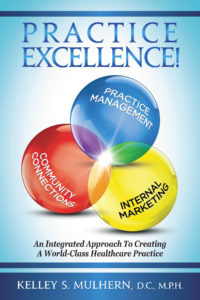A couple of weeks ago I attended several sessions of the virtual Influence and Impact Summit produced by Michael Hyatt of Platform University. It was seriously one of the best online summits I’ve ever participated in. (If it happens again next year make sure you sign-up for the free event!) The speakers were insightful, the topics were impactful, and the take-aways were truly meaningful. In my last blog, I reviewed several quotes by the legendary John Maxwell. (Missed it? Check it out!) As I mentioned in that blog, I actually had two favorite sessions. And because I couldn’t pick a winner, I chose to talk about them in alphabetical order.
Today, I’m happy to share my other “tied-for-first-place” speaker from the Impact and Influence summit: Amy Porterfield. Now, I confess…I LOVE AMY PORTERFIELD! I’ve been following her on social media for some time, I subscribe to her blog, and I’ve purchased several of her products. She’s a gifted entrepreneur who’s changed the lives of countless people. Honestly, I almost didn’t listen to her talk because I thought I was familiar with her message. I’m so glad I changed my mind! In all the time I’ve been tuning in to Amy, this was the first time I saw her “unscripted” in an interview.
She was absolutely magnificent. Her vibrant personality and genuine compassion were evident from word one. Amy was engaging, funny, sincere, and humble while sharing pieces of her story and motivation. What struck me the most from her 30-minute interview was how much I could relate to her on a personal and professional level. We’re in completely different fields, but she has the same fears and worries that I do. (Well…she didn’t come out and say she’s afraid of zombies, but isn’t everyone???)
I was floored to learn that Amy sometimes worries her products might not be good enough…that her success might vanish…that there might not be enough money for future needs… Wow! Does that sound familiar? Do you ever have those same fears or worries? How do you handle them? When faced with these fears, Amy gives herself 10 minutes to worry about it, then she consciously shifts her focus to the next important thing. What a great tip to use in healthcare practices! (The host, Michael Hyatt, said he’s a worrier too. His wife tells him “wait to worry.” Basically, there’ll be time later to worry, right now you need to buckle down and get to work. Invariably, by the time “later” comes, there’s no need to worry!)
Another interesting lesson Amy shares is how, when she left her 9-5 job to begin her entrepreneurial journey, she was scared. So, she took on consulting clients for the first two years. She later realized that while comfortable, this was a distraction holding her back from her true path. Have you ever struggled to make something fit your life or your practice, to no avail? Then, when you stop pushing, you realize you were meant to go in another direction? (Me too!)
One last impactful moment in the interview occurred when Amy shared “What’s ahead of you is where the magic is.” We can get bogged down in the minutiae of today or the regrets of the past and lose sight of the future. We can’t change what happened yesterday…and the actions of this moment may have little impact on today. But…the future is molded by the thoughts and actions of today…it’s completely up to you. You can have a future that looks identical to your present life if you change nothing. However, if you plan carefully…choose your actions with intention…take deliberate steps…your future can be magical!
So how does this relate to healthcare practice marketing? If you change nothing about how you market your practice…if you fail to put a plan in place…then you’ll get the same level of practice success you’ve always had. Or, you can experiment, try new marketing strategies, take intentional marketing steps, and create new levels of practice success.
One last thought about the summit, and then I’ll go back to my normal healthcare marketing blogs…there were so many fantastic speakers. I have to give honorable mention to several more: Dr. Josh Axe, Dave Ramsey, Carrie Green, Donald Miller, Bob Goff, and Andy Andrews were all amazing. If you think about it, there’s no shortage of inspirational leaders. Even if they aren’t in the healthcare field, their messages can translate to your healthcare practice. Block some time out of your schedule to listen to a few of your favorites (via podcast, e-book, interview, etc.) every week. Their messages can raise your energy, motivate you, and help you intentionally create the practice – and life – of your dreams!
What about you? Who are your favorite inspirational leaders? Please share your comment, quote, or story in the comments section!










 To replace employees making between $30-50,000 a year, the cost is 20% of the salary. These costs account for things like hiring and training expenses.
To replace employees making between $30-50,000 a year, the cost is 20% of the salary. These costs account for things like hiring and training expenses.





 These quotes were a great reminder that we’re often harder on ourselves than anyone else. And…if we’re really being honest…your patients connect with you, not just the information you provide. Stop beating yourself up, struggling for perfection, and holding yourself back. Don’t put off a great marketing event or speaking opportunity because you’re worried it won’t be perfect. Because,…guess what? It won’t be perfect, no matter how hard you try. Do your event, learn from your mistakes, and commit to constant improvement. Be authentic and genuine, and people will respond.
These quotes were a great reminder that we’re often harder on ourselves than anyone else. And…if we’re really being honest…your patients connect with you, not just the information you provide. Stop beating yourself up, struggling for perfection, and holding yourself back. Don’t put off a great marketing event or speaking opportunity because you’re worried it won’t be perfect. Because,…guess what? It won’t be perfect, no matter how hard you try. Do your event, learn from your mistakes, and commit to constant improvement. Be authentic and genuine, and people will respond. Finally, in case you’ve forgotten…your life is amazing! Regardless of where you are right now, you’ve been blessed with opportunities, friendships, skills, and lessons no one else has. The best way to move forward is to be grateful and appreciative of what you currently have. Oh…and not only does everyone influence someone…but everyone is loved by someone.
Finally, in case you’ve forgotten…your life is amazing! Regardless of where you are right now, you’ve been blessed with opportunities, friendships, skills, and lessons no one else has. The best way to move forward is to be grateful and appreciative of what you currently have. Oh…and not only does everyone influence someone…but everyone is loved by someone. 